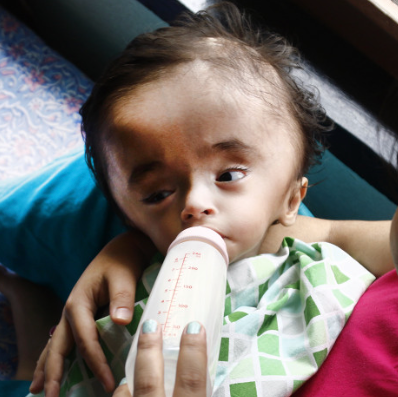Nile Moss took his first breath of air in a California hospital on August 23, 1990. His parents welcomed Nile with hope and great joy.
Fifteen years later, Nile Moss struggled for his last breath of air in a California hospital, the victim of a hospital-acquired infection. A deadly form of bacteria called MRSA had invaded Nile’s bloodstream and led to deadly pneumonia. Nobody knew that at the time.
Nile said good-bye just before midnight on Easter Sunday. He lost consciousness and died the next morning. His parents were stunned and confused. What went wrong? What could have been done to save Nile’s life? Their confusion turned into a quest for answers.
Tragically, the information provided did not quiet the concern for the parents, or lessen their pain. Nile’s death should not have occurred. Like 100,000 other patients who died that year from hospital-acquired infections, Nile’s death could have—and should have—been prevented.
Nile was born with a treatable condition called hydrocephalus. That condition required two brain surgeries and annual MRIs to monitor his condition. Each visit produced a report of good health. At no time did Nile’s parents fear harm would come to him through routine hospital screens. They were never informed about the dangerous bacteria that accumulate on surfaces in our nation’s best hospitals, and are inherent in many medical facilities.
Seventy-two hours before Nile died, he developed symptoms that looked like the flu—a fever, deep cough, dark mucus, headache, shortness of breath, and fatigue. Pediatric doctors tested Nile for strep bacteria. The test came back negative, but no other tests were performed. He went home with antibiotics that were appropriate for strep and ineffective for MRSA. Nile’s fever peaked at 104.5 and his breathing was labored. Nile was taken back to the doctor early Easter morning. An x-ray confirmed pneumonia. Nile was in a medical emergency, but the truth of his condition had not yet been diagnosed. A rapid two-hour test for MRSA existed at the time, but was not the standard practice.
Five hours passed before Nile was admitted to the hospital, as his fever continued to rise, and his breathing worsened. Five additional hours passed before he received his first antibiotics. His heart began to fail. His parents saw urgency in the faces of the doctors. Nile was dying and the doctors knew it. He was pronounced dead at 5:30 the next morning.
The official cause of death was recorded as sepsis, but later identified as MRSA bacteria that Nile had acquired from simply lying down on a contaminated MRI bed. CDC estimates more than two million people per year will contract one of a growing number of deadly infections while visiting the hospital. Many will pay the ultimate cost for the lack of urgency that has allowed this epidemic to go untreated for decades.
Upon learning these statistics, Nile’s Project was launched to help bring awareness to other families. In 2008, California passed SB1058, called Nile’s Law, requiring hospitals to screen, measure, and report hospital infections.
Please see http://www.nilesproject.com/ to learn more about Nile’s Project, Nile’s Law, and the dangers of MRSA.







